Are Buckeye Trees California Native Line Drawing
Family SAPINDACEAE
Life Cycle
In the merry month of May the California Buckeye puts on its most magnificent brandish with candle-like white spires of flowers that fill the air with fragrance and brand the copse impossible to miss fifty-fifty when they are tucked abroad in creek drainages and canyons and the edge of chaparral—their preferred habitats. [Photo: 1].
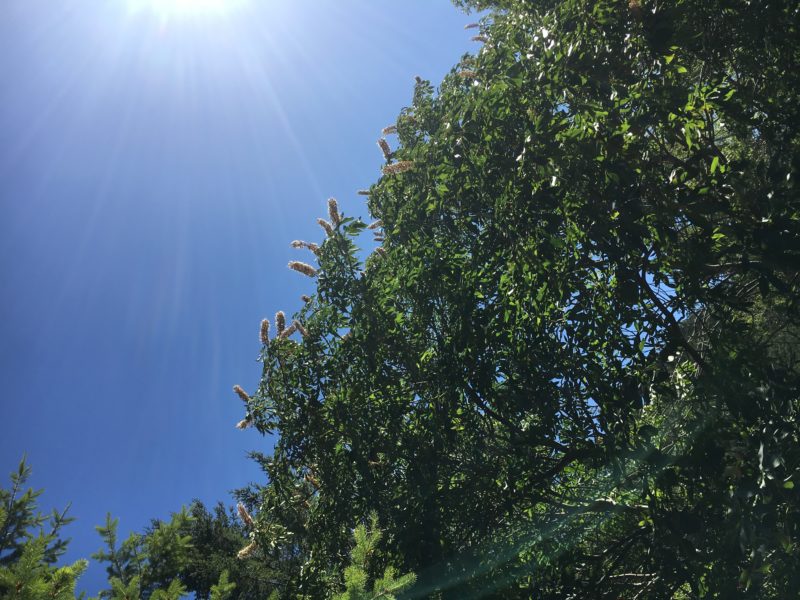
Like the big leaf maple, a fellow member of the Soapberry family, the buckeye begins its yearly life cycle past producing large palmate leaves that emerge in spring from the polish grayness branches, covering the tree in a soft light green. [Photos: 2, iii, 4,v, 6, seven ]
Soon after, the developing panicles of flowers can be seen peeking out of the foliage. [Photograph: 8]. Inside a calendar month or so, the individual pink and white flowers begin opening from the bottom up with long orangish-tipped stamens curving out of them. [Photos: 9, 10]
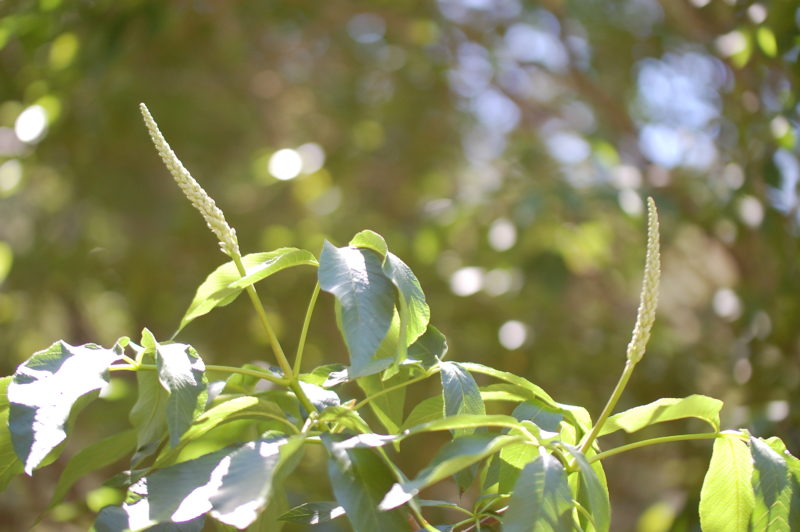
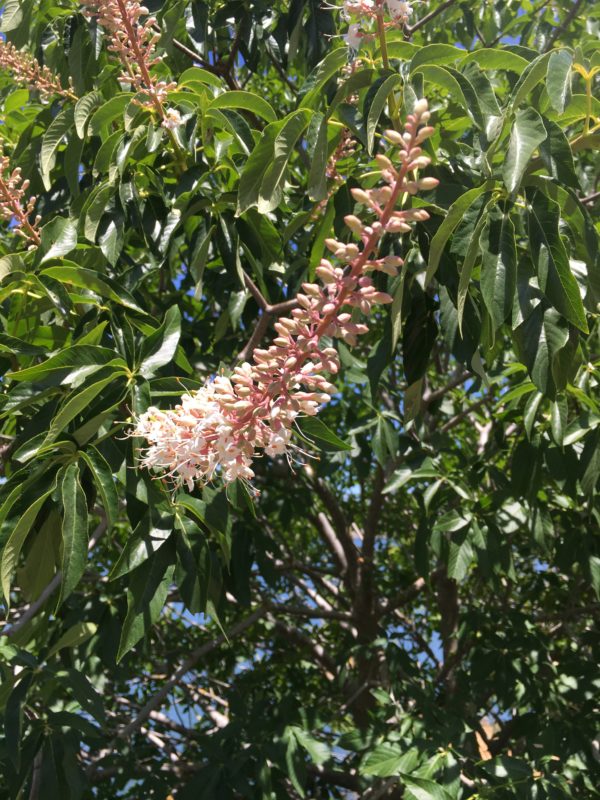
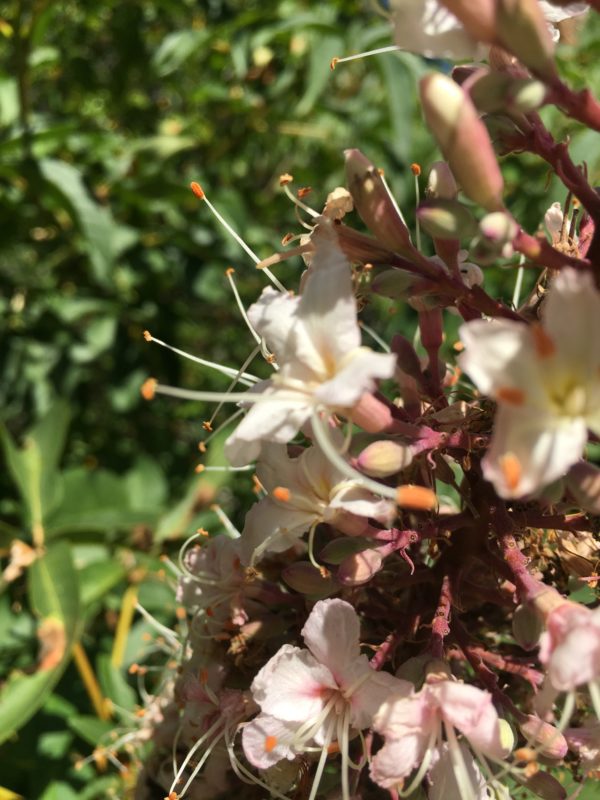
The lower flowers tend to exist female and volition develop the few fruits that somewhen become the buckeyes. When mature, the panicles often reach a whopping 8 inches in length. [Photo: 11]. Flowers wither in the social club in which they develop, from the bottom up. [Photograph: 12]
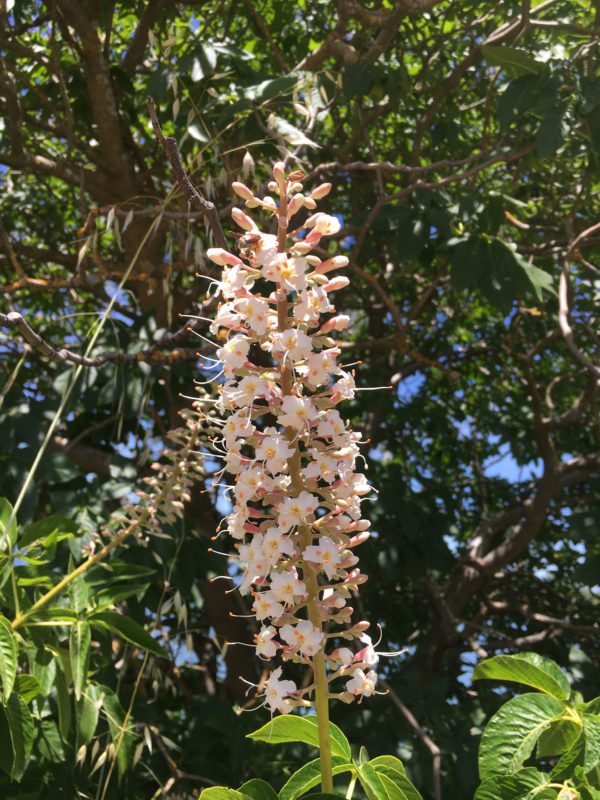
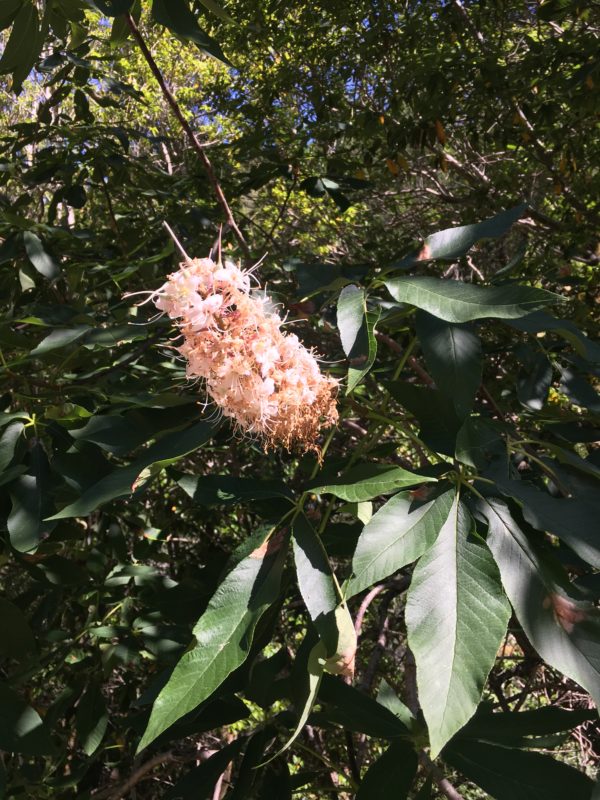
When summertime's seasonal drought reaches its pinnacle, the leaves turn brown, wither and drop—an adaptation to conserve h2o— unveiling the green felt-like husks or capsules containing the buckeyes. [Photos: 13,14]
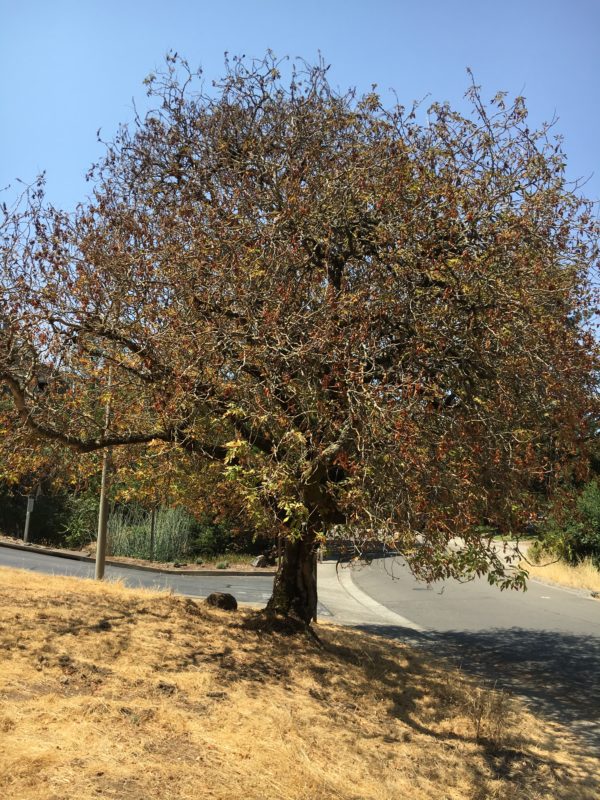
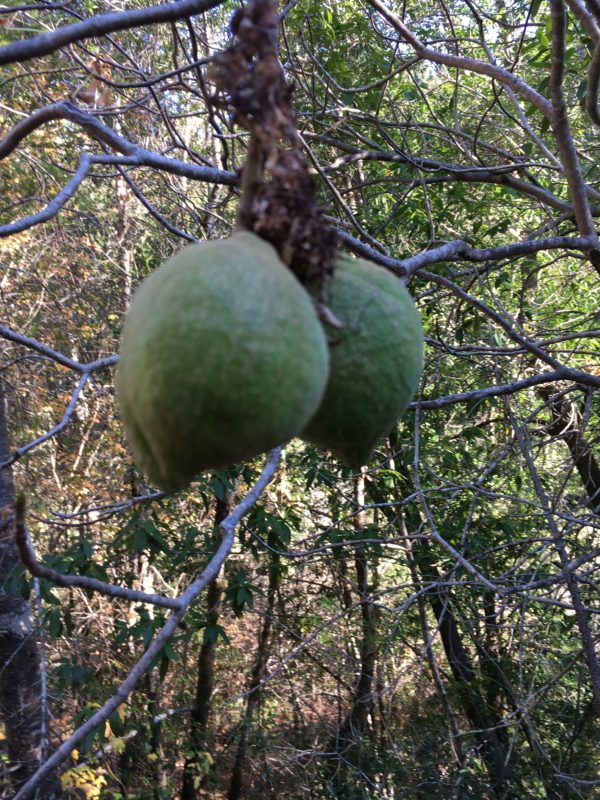
The capsules ripen in the fall and plough gilded brownish. [Photos: fifteen,16] By early on winter they accept divide open and dropped the glossy chocolate-brown buckeyes, each a large single seed. [Photo: 17]
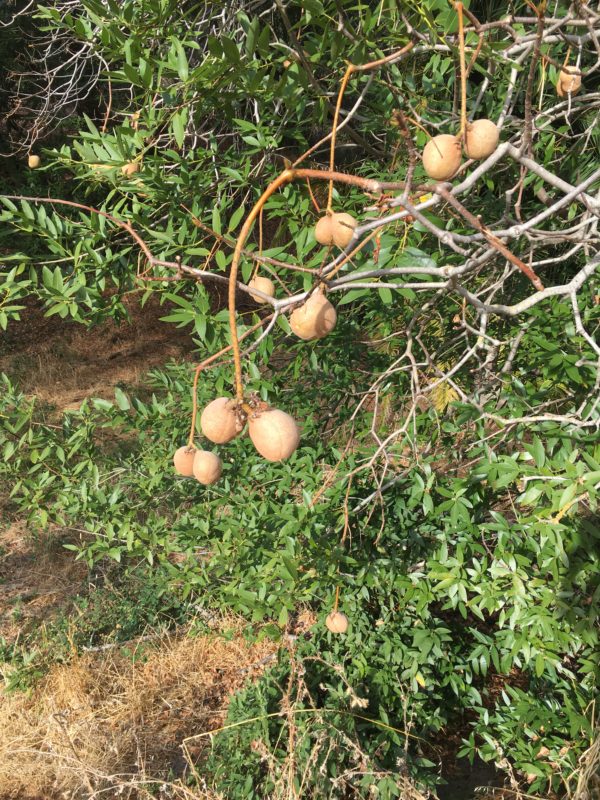
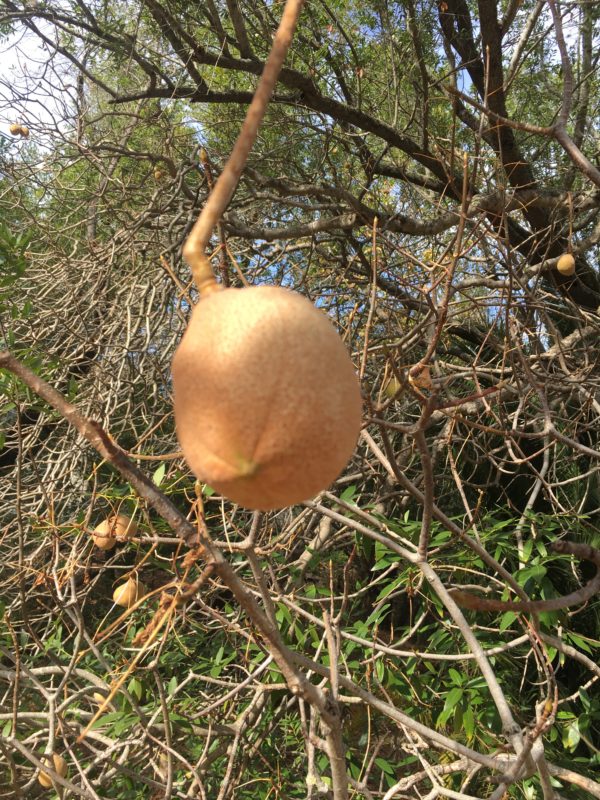
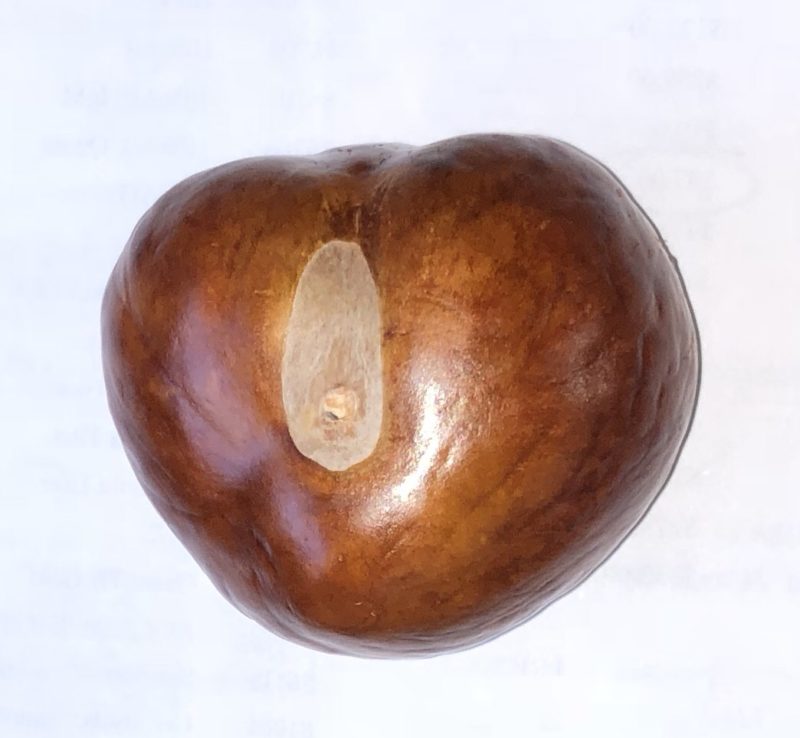
In wintertime, the smoothen silvery bawl and lovely form of the tree make information technology a indicate of interest while older copse display bawl that is checked and full of character. [Photograph:18] The copse more often than not top out at most fifteen feet in peak simply go on to spread their canopies over their lifetime. Their beauty makes them a focal bespeak in many gardens.
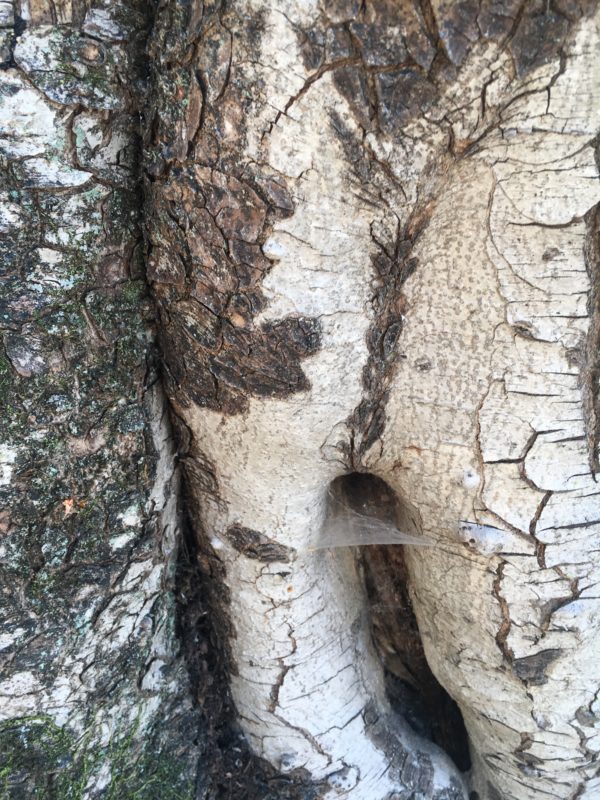
Ecology and Use by Native Americans
All parts of the tree are toxic to many animals, including human beings. They contain glycoside compounds which destroy ruby-red blood cells and depress the key nervous organisation. Native Americans were able to eat the buckeye seeds which are rich in carbohydrates past first leaching out the poison. They likewise used the toxin to stun fish by throwing the seed husks into pools in creeks creating a foaming lather, making it easier to take hold of the fish. Buckeyes contain saponins, which are compounds that create soapy-like substances—hence the family name, Soapberry. [Photo: 19]. These saponins are the tree's defense force against insects and other organisms.
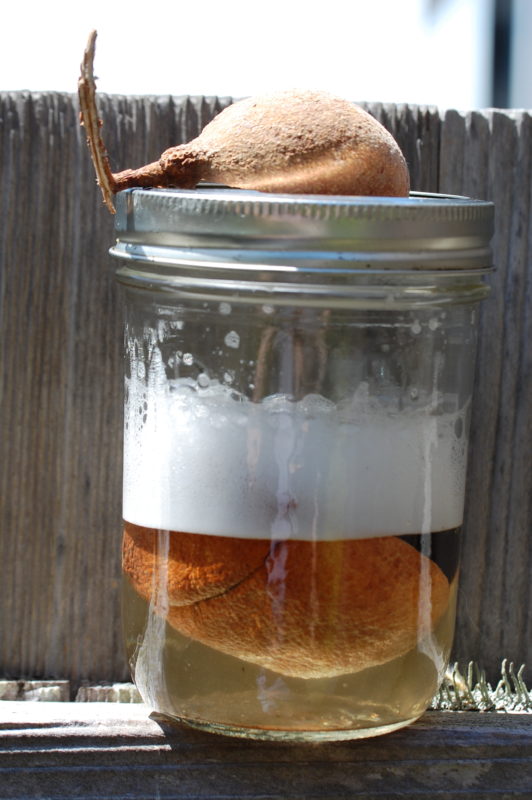
While the nectar and pollen are toxic to European honeybees and can cause death and deformities in them, the buckeye is one of the larval host plants for the native Spring Azure or Echo Blue butterfly (Celastrina repeat), and its nectar is a source of food for many native bees and other collywobbles. It'south speculated that the native insects' long exposure to the buckeye toxins have helped them evolve adaptations to minimize their effects, unlike the more recently arrived European honeybee. California basis squirrels have been reported to eat the seeds, and black-tailed deer browse the leaves. Of particular note is the fact that buckeyes, unlike many hardwood species, practise not support a rich mycorrhizal community, and thus few mushrooms are associated with them.
California buckeyes are not important as timber trees since they are one of the softest and lightest hardwoods native to the U.S. The wood is piece of cake to work but isn't strong and is subject area to rot. Bulge wood, which is used for turned objects, is more valuable.
Range and Occurrence
As its proper noun suggests, the California buckeye is endemic to California, meaning that information technology is native only in California. It'due south found primarily in the Klamath, Coast, Cascade and Sierra Nevada ranges where it can occur as a dominant tree species or in combination with other trees, peculiarly oaks.
In the Gualala River watershed, information technology occurs in both the Gualala River Forest in the northwestern portion of the watershed and in the Buckeye Forest to the south and due east. Recently, botanists mapping areas of the Buckeye Forest discovered an unusual occurrence of a grove of buckeyes. Ordinarily, buckeyes are scattered beyond the landscape, but in this case, there were buckeyes growing together with some unusual associations of different species of oaks. Botanists map vegetation that occurs in patterns, and these patterns are then described and classified equally alliances. Their relative rarity is ranked in terms of how common or rare they are in the country and globally and how threatened. This woodland brotherhood of buckeyes is considered rare and threatened and is therefore subject to legal protection.
Buckeyes are occasional in the western part of the watershed and can be found forth the river on Annapolis and Skaggs Springs Roads. There are several near Clark's Crossing uphill on Annapolis Road.
Selected Sources
Sequin, Margareta. 2022. The Chemistry of Plants: Perfumes, Pigments, and Poisons
Siegel, Noah and Christian Schwarz. 2022. Mushrooms of the Redwood Coast.
The Conservation Fund. 2022. Buckeye Forest Integrated Resource Direction Plan
US Woods Service, Burn Effects Information System, Index of Species Data (https://www.fs.fed.the states/database/feis/plants/tree/aescal/all.html
All photos past Laura Bakery except Photograph #17
Attribution for Photograph #17: By Wilmot [CC Past-SA 4.0] from Wikimedia
Source: https://gualalariver.org/nature/trees/california-buckeye-aesculus-californica/
Posted by: charettebegather1962.blogspot.com


0 Response to "Are Buckeye Trees California Native Line Drawing"
Post a Comment